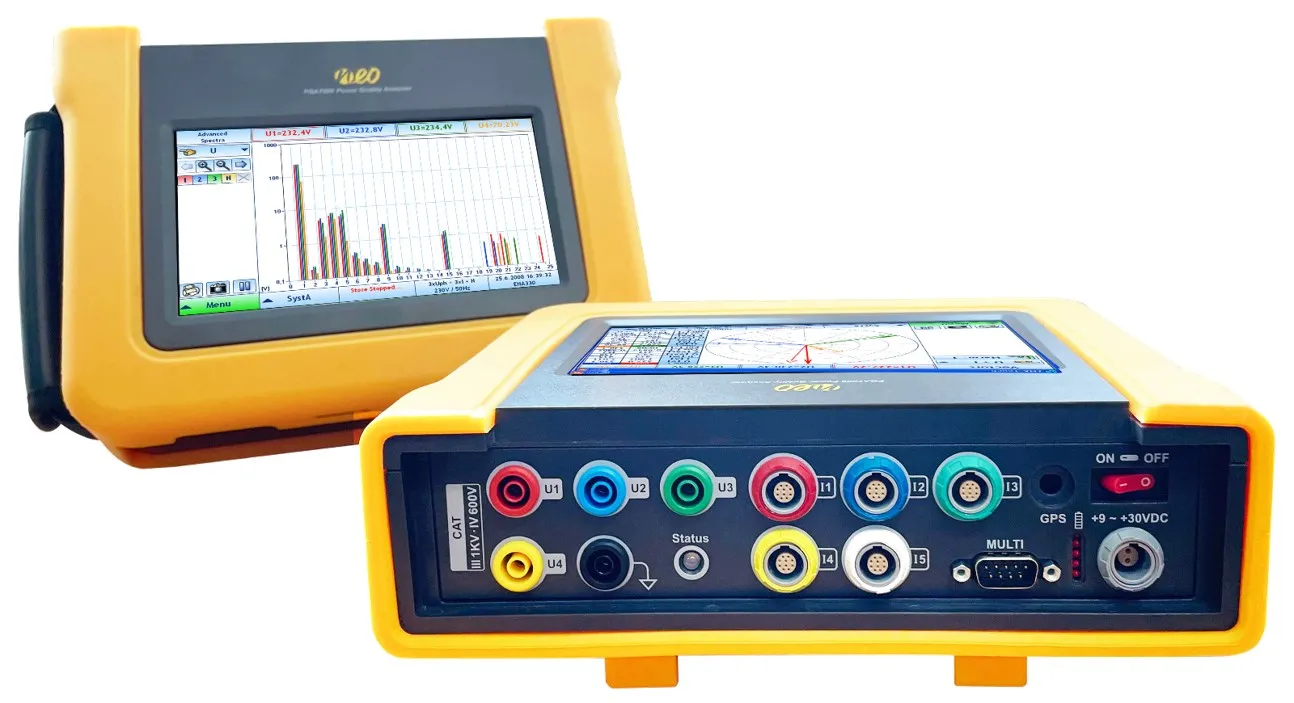

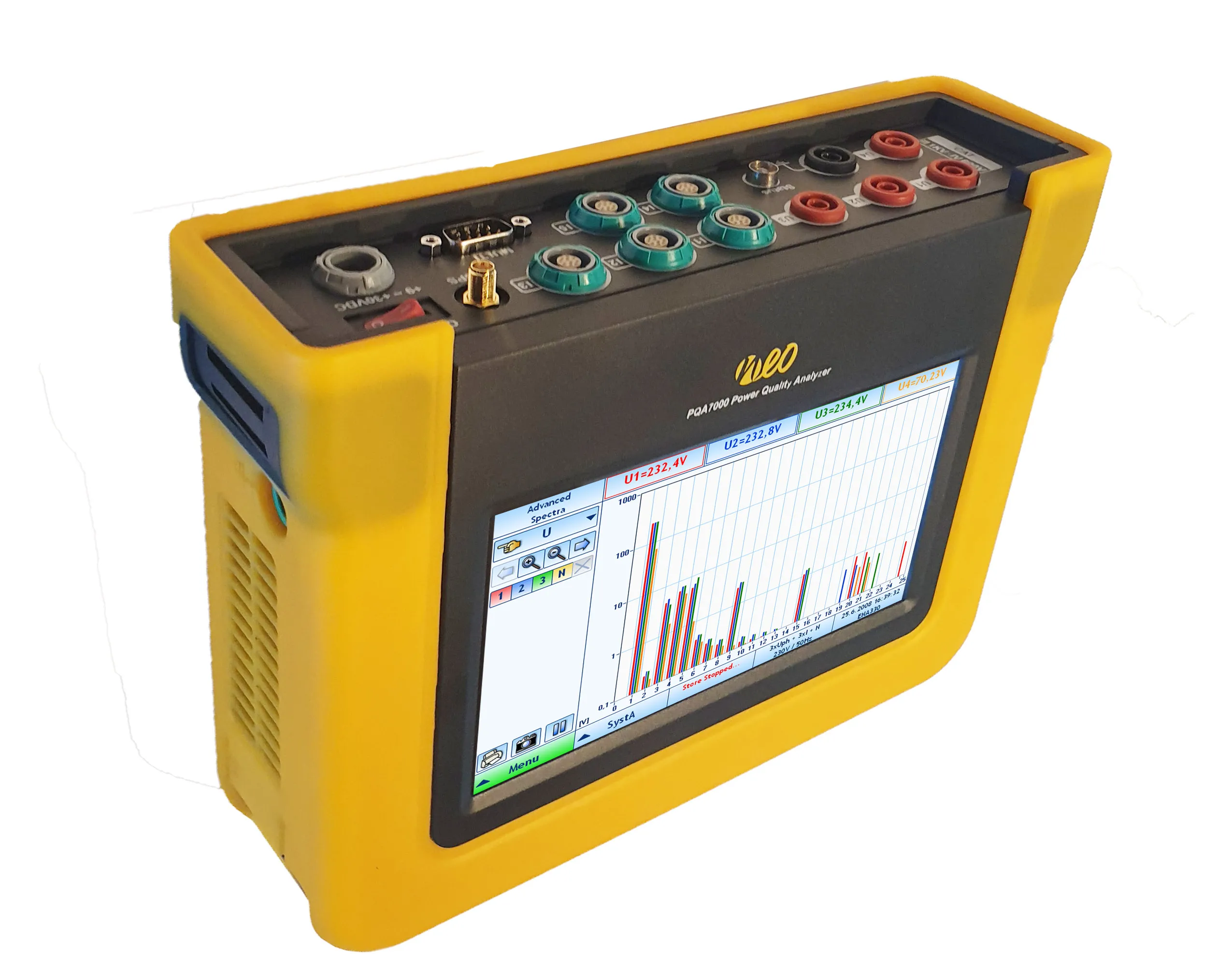
PQA7000
Mobile Power Quality Analyzer
As the year progresses NEO Messtechnik continues to evolve and demonstrates once again the ability to forge its long-standing expertise of the Power Quality market into yet another impressive PQ Analyzer that enables engineers to stay ahead of the curve.
Key Features
| Sampling Rate 48 kS/s | Bandwidth 20 kHz | Accuracy 0.05 % | Resolution 24-bit |
 | Powerful Software.. that doesn’t stand in your way Direct measurement data monitoring on the device (oscilloscope, FFT, vector, recorder, etc.) Powerful data evaluation (overlay of several measurement files, multi-quantile calculation, report generation according to various standards in post-processing like EN50160, IEC61000-2-2, export options etc.) Synchronization of multiple devices (incl. PMU function) |
Precise MeasurementsHigh-frequency voltage and current (20 kHz) measurements with 0.05 % accuracy and up to 48 kS/s with current sensors of your choice 7″ Multi-touch display – or completely without a display plus 256GB data storage that is extendable |  |
Remote Connection and Multiple Device Synchronization
Endless possibilities
| Large Data Storage 256 GB from the get-go and extendable depending on your specific application needs! | Easy Remote-Connection access single devices for monitoring and configuration purposes remotely (TeamViewer©, FastViewer©) | Synchronization of multiple devices including PMU function |
The NEO Sensor Integration
Highest Precision
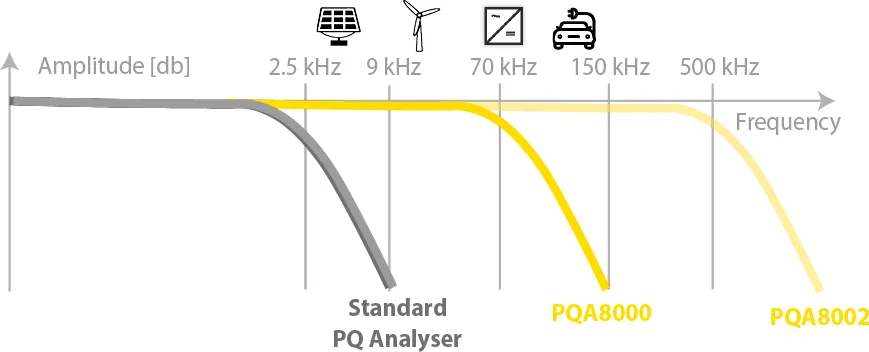 | HIGH BANDWIDTH & HIGH ACCURACYConventional PQ Analyzers, even if they are Class A certified, are not sufficient for modern measurement applications. We use the best available components to ensure the highest safety category and also the highest accuracy. NEO instruments offer high bandwidth (up to 1 MHz) and correct the frequency dependent behavior of current & voltage sensors as well as integrated electronics to achieve the best possible measurement results |
SENSOR INTEGRATIONAll current sensors offered by NEO Messtechnik are industry proven for different applications. We use and improve on the best available sensors in the market. FREQUENCY DEPENDENT CALIBRATION MEASUREMENT RANGE DEPENDENT CALIBRATION |
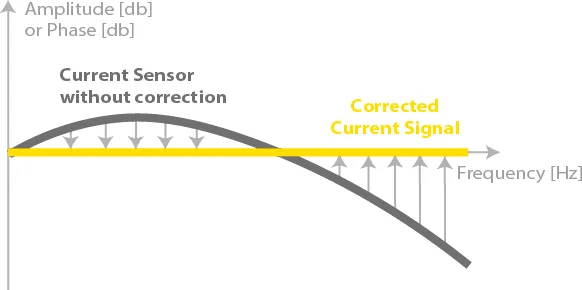
|
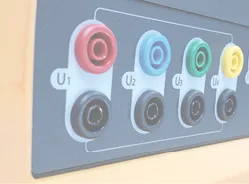 | LEADING IN SAFETYOvervoltages from power lines down to factories can be higher than normal operating voltages. To avoid any kind of electrical accident, NEO Messtechnik emphasizes the importance of a safe instrument design. For example, the high-voltage inputs of the PQA 8000 instrument (CAT IV 600V) are isolated up to 6kVp while maintaining high precision (0.05%) and high sampling (up to 1MS/s). This is world-leading technology. |
Truly Intuitive Software
Clearly structured. Explicit Menus.
1. SETUP
The instrument has a clear structure that shows schematics with explanations. | 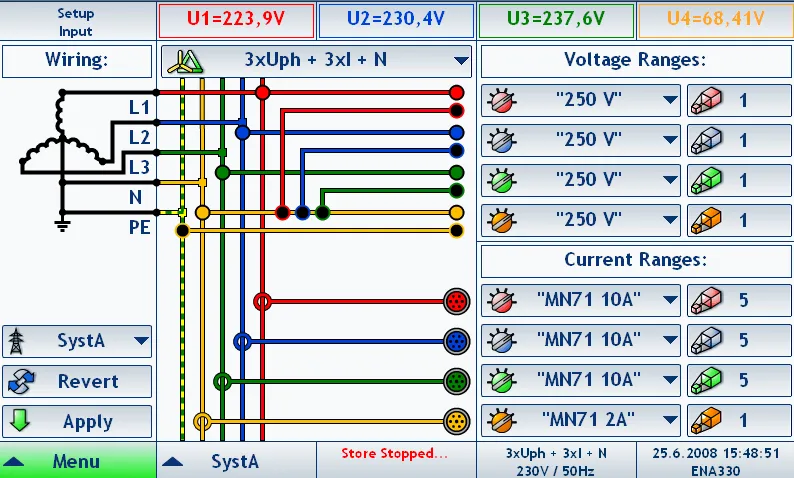
| |||
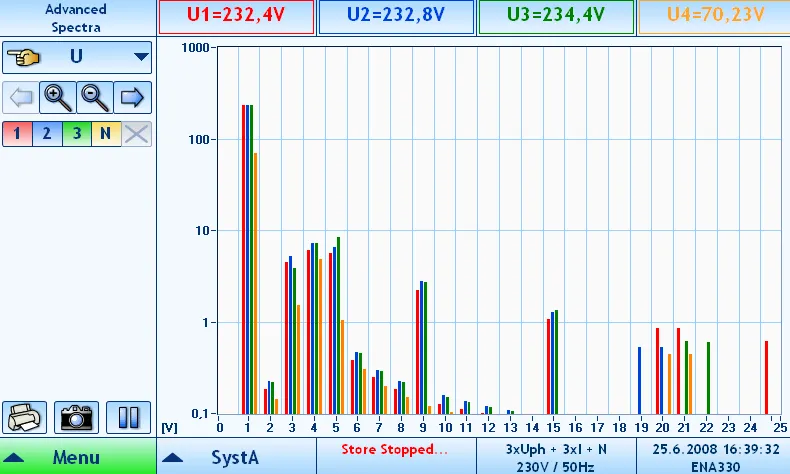
| 2. MEASURE
During measurements the user can define widgets such as Scopes, Vector Scopes, Harmonic FFTs, Tables, and Recorders. | |||
3. ANALYSE
Sophisticated functions include PQ Data, Transients, Disturbances, and Alarms. | 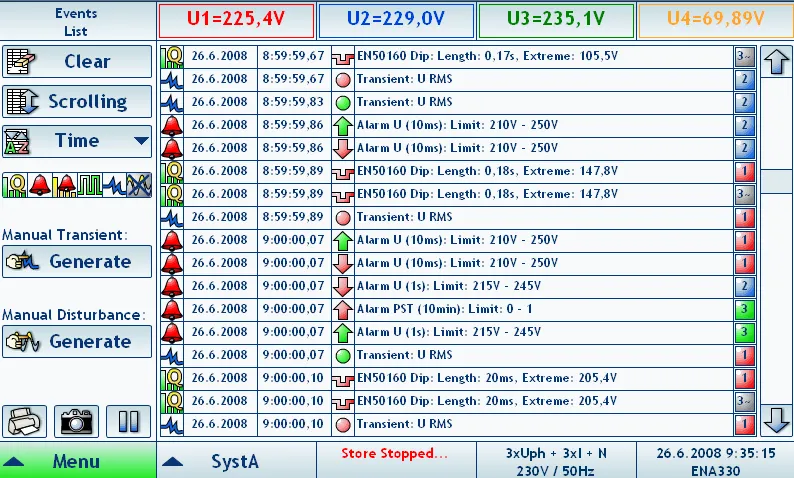
| |||
| 4. REPORT
The instrument can automatically generate reports and professional documentation. The user can create reports that include all relevant information (location, comments, company logo, etc) directly on-site or during post processing. PDF reports that are saved on the instrument are always available and can be shared directly via email. | |||
5. EXPORT
Data can be exported into CSV, XLS, PDF, Comtrade, and PQDiff. | 6. OTHER PROGRAMS
The instrument uses Microsoft Windows© as the operating system. Programs such as Microsoft Excel, Word or Matlab can be added as well as Email messaging services. |
Features
Power Quality
according to IEC 61000-4-30 Ed.3 and IEC 62586
Harmonics, Interharmonics and THD: Higher Frequencies (200Hz band): Symmetrical Components & Unbalance: Flicker (PST, PLT, Pinst) and RVC: | Voltage Events: Frequency: Voltage, Current: Time Synchronization: |
Power
Power Calculation: Frequency: Voltage, Current: Power Calculation: | Energy: Efficiency: Wiring: |
Waveform & Transients
MIN, MAX, RMS, AVE: ENVELOPE / WINDOW: DELTA: | DERIVATE (RATE OF CHANGE): VOLTAGE SIGNALLING: EN50160: |
Disturbances and System Dynamics
1/2 PERIOD TRIGGER: SYMMETRICAL COMPONENTS: Phasor Measurement Unit (PMU) RATE OF CHANGE FREQUENCY (ROCOF) |
Complying Standards
POWER QUALITY, HARMONICS, FLICKER:
IEC61000-4-30 Ed. 3 Class A / IEC61000-4-7 / IEC61000-4-15 / IEC62586-2 Ed. 2 / IEC62586-1
PUBLIC GRID, RAILWAY AND INDUSTRY
EN50160 / EN50163 / IEC61000-2-2 / IEC61000-2-4 (Class 1; 2; 3) / IEEE519 / IEEE 1159 / IEC61000-2-12 / NRS048
WIND POWER, RENEWABLES AND GRID CODES
IEC61400-21 / IEC61400-12 / FGW-TR3 / VDE N-4105 / VDE N-4100 / VDE N-4110 / D-A-CH-CZ / BDEW / ROCOF / IEEE C37.118-2005 (PMU)
MOTORS, TRANSFORMERS AND ELECTRICAL EQUIPMENT
IEC60034 / IEC 60076-1 / IEC61000-3-2 / IEC61000-3-3 / IEC61000-3-11 / IEC61000-3-12






